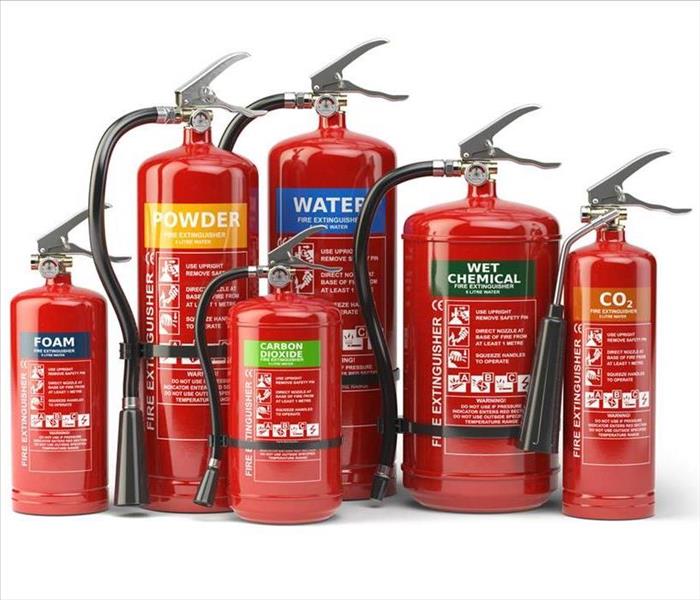How to Use a Fire Extinguisher During a Fire
3/18/2021 (Permalink)
Knowing how to use a fire extinguisher correctly can be the difference between life or death during a home fire. When used properly and promptly, they can stop a fire dead in its tracks, giving the fire department time to arrive.
But there is a technique to do it right. It’s called P.A.S.S., and it’s what the experts recommend for putting out fires.
4 Types of Extinguishers
Each fire extinguisher will be labeled with a specific class:
Class A, for solid combustible fires.
Class B, for flammable liquid fires.
Class C, for electrical fires.
Class K, for kitchen fires.
Most residential fire extinguishers will be a combination: ABC. This is an excellent all-around extinguisher that covers all the bases. Using a single-class type is ok if you’re experienced with it, but you’ll be fine with an ABC in most homes – or even better, two of them.
Safety First!
Before you consider using an extinguisher on a fire, you need to make sure you’re safe. If there’s even the slightest doubt of your safety while fighting the fire, leave immediately and let the professionals handle it. An event called a flashover can happen in seconds, and if you’re inside when it does, you’re not likely to survive. If the flames are even slightly brushing the roof, get out!
Once everyone is safe, call the fire department. Then you can consider fighting the fire yourself if it’s isolated and the smoke isn’t dangerous.
P.A.S.S the Test
P.A.S.S stands for pull, aim, squeeze and sweep. Grab the fire extinguisher and pull the safety pin. Aim the nozzle at the base of the fire. Squeeze the handle gently at first until you have a sense of the flow - -then give it a full blast. Sweep the stream from side to side.
Done right, you can save your home a great deal of fire damage. However, safety should always be in your mind; if the fire is growing, go ahead and leave it. Once the fire is out, call a top fire cleanup company in your area to get the restoration process started immediately.





 24/7 Emergency Service
24/7 Emergency Service
